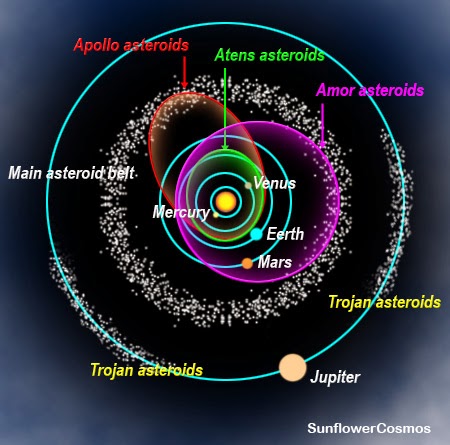ON June 30th, Asteroid Day, we honor Antinous ... or rather Antinous the near-Earth asteroid which could one day pay us a visit ... with a bang.
The Antinous Asteroid … officially called "1863 Antinous," was discovered in 1948 by an American astronomer named Carl. A. Wirtanen.
Astronomers had known for some time that asteroids were plentiful between Mars and Jupiter. But no one had expected to find any in the Inner Solar System ... certainly not near Earth.
But Wirtanen turned his Lick Observatory telescope inward and discovered eight asteroids in our own vicinity.
These Inner Solar System bodies are called "Apollo Asteroids" all named for Classical deities, including of course Antinous.
Apollo Asteroids are collectively named after the first one to be discovered. The asteroid "1862 Apollo" was sighted in 1932 and then lost until 1973.
Apollo asteroids are so small and faint that they are difficult to see except when close to the Earth.
Astronomers fear 1862 Apollo may one day strike Earth, however, they currently do not expect 1863 Antinous to hit Earth … assuming it does not stray from its current admittedly erratic orbit.
Antinous is about 2 km (1.2 miles) in length and spins on its axis one revolution every seven hours. It takes more than three years to orbit the sun.
Antinous Asteroid is a "Mars Crosser" and also an "Earth Crosser" or even "Earth Grazer" planetoid ... meaning it crosses the orbit of Mars and also the orbit of Earth ... and comes very close to Earth.
Antinous came close to the Earth in 1992 and 1999 ... 18 million miles (30 million km) and it is supposed to come past Earth again in the 21st Century ... but hopefully won't hit us!
A collision with an "Apollo Group" asteroid 65 million years ago may have been one of the causes of the extinction of the dinosaurs. A closely related group, the "Amor Group" of asteroids, come close to Earth but do not cross its orbit.
The art of Asteroid Astrology is very arcane ... only a minority of astrologers employ "Astrals," as astrologers call these planetoids ... and then usually only a couple of major ones such as Chiron and Lilith.
Quite honestly, they are so new that astrologers haven't quite agreed on what they mean.
The whole focus on asteroids got a boost when astronomers officially down-graded Pluto from a "planet" to a "minor planet" or "dwarf planet" ... the same category to which Chiron belongs.
So astronomers and astrologers alike are having to take another look at their definitions as humankind's knowledge of the cosmos grows by quantum leaps.




No comments:
Post a Comment